September mushrooms (part 2)
Hola, setero! I had a tremendows fruitful walk across the streets and lawns of St.Petersburg yesterday, in terms of fungi. Now I have so many impressions to share! I consider posting at least part four :P
This post goes for #fungifriday challenge by @ewkaw
Well, maybe the divercity is not the main feature of my posts, cause the shrooms I shoot recently, mostly all the same!.. But they look so sympatico that I simply cannot stop taking more and more pics :P
Dryads saddle
I wanted to make a long detailed dedicated post about this mushroom a while ago, since I start noticing it around and making more and more pics. So, Cerioporus squamosus, or Dryad’s saddle, or Pheasant’s back, or Трутови́к чешу́йчатый, as we name it in Russian (among his other traditional names are трутовик пёстрый, пестрец, заячник, вязовик).
Quite a well-spread specie in US and Europe. It is not a top tasty mushroom, but it is edible and you cook a great little dish with it -- unless you met an old over-matured copy of it. And as they grow not in the soil but on the wood, they do not accumulate all this bad eco-unfriendly stuff we have in megapolis.
They have very bizarre shape, even the mushroom bodies growing near each other, can look different. But once you have seen them a few times, you are unlikely to confuse it with synonymous ones.
Young mushrooms, just started growing process.
There are a few characteristic details to look at. Take a look at this unusual cap that its sprouts have (you will never see grills underside, only polypore). Look at this thick stem. Nature has awarded many mushrooms with a similar cap design (mimicry!) but such a unique thick stem is a characteristic touch. They seem to prefer elms, but you can find it on any other old log... and also on a living tree, as well. Those black spots on its cap (which remind of a pheasants back and give it its other name). The smell. People say, this mushoom smells like watermelone, other compare it to cucumber.
For foraging purpoces, you should better pick up small ones (say, about half a palm, or less) otherwise they can have the texture of leather. Stem is the hardest part and better not to go into your dish. It can be fried, become a pizza topping, or you may dehydrate it and grind to a mushroom powder and keep it, to use later for soup, sauce, etc.
Bы вряд ли перепутаете его с грибами-синонимами, если несколько раз его видели. Посмотрите на эту необычную шляпку-бочоночек молодого растущего гриба (с ее нижней стороны вы никогда не увидите пластинок, а только "соты"). Посмотрите на эту характерную ножку! Природа наградила многие грибы схожим дизайном шляпки (мимикрия) но такая толстая нога, в сочетании с другими признаками конечно, это характерный знак. Также, можно обратить внимание на запах: многие говорят, что гриб пахнет как арбуз, или огурец. Растет он как на мертвой, так и на живой древесине, предпочитает вязы (отсюда еще одно его название), но на самом деле встречается много где. Даже и на земле, в которой захоронены остатки древесины. Для практических целей лучше брать молодые или не очень старые грибы (в идеале с половину ладошки или меньше), простой тест: потыкайте вилкой, и слишком жёсткую часть отделите в мусорное ведро. На месте без вилки молодость гриба определяется лёгким щипком края шляпы — если крошится, можно брать. В голодные годы наши предки находили применение и старым экземплярам — варили из них грибной бульон. А так, употреблять лучше в жареном виде (те кто пробовал, говорят на вкус напоминает мясо цыпленка), также можно засушить, смолоть в грибной порошок и добавлять как приправу в супы, соусы, и т.д. Гриб встречается очень часто, и если вы запомните место где он вырос, то урожай можно собирать все лето, и даже часть осени.
NB. Just yesterday I happened (again) to stumble upon its sinonym, and took a pic.
This is their sinonym: a mushroom that looks pretty much the same, same cap, same big family occasion, big-sized fleshy caps... but it has grills instead of polypore, and growing in soil instead of a wood. Enough reasons to omit it from your basket :P
chicken (of the woods)
With the help of russian micologist forum, I've got correct iD for this splendid fungus: it is Laetiporus sulphureus, or in Russian Трутовик серно-жёлтый., or 'chicken of the woods' I have heard so many times. But it is the first time I discover it for real.
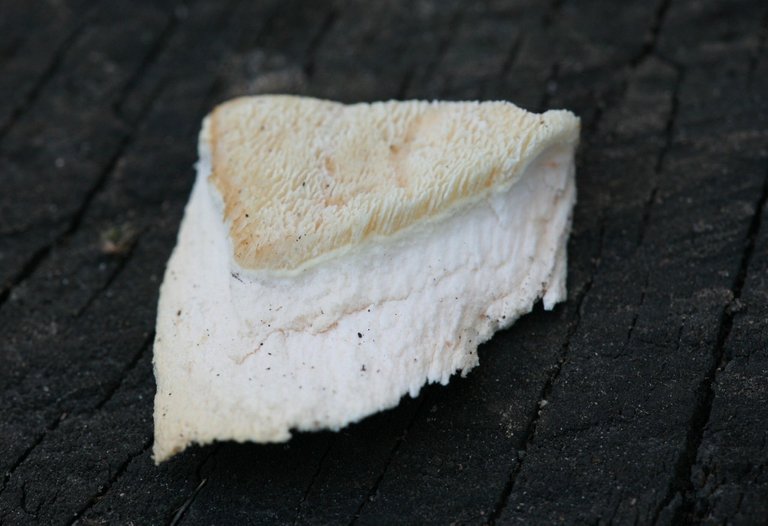
This is fragment of its cap, upside down. I decided not to ruin this beautiful family just to portrait it. As you may see, it has polypores, not grills. So, getting an iD I tried to find out more info, and this is what I learned about it.
Now, its time to part ways, I wish you good luck -- and Good Hunting! oh, and Happy Fungi Friday to you!
#FungiFriday fun challenge is hold by @EwkaW
I hope many of you will join, as there are only 2 simple rules:
- when Friday comes, share your fungi with us! post your own, original photo/drawing/art/food/anything-at-all of any type of fungi (yes, stolen images will be checked and reported !)
- add #fungifriday (not necessarily must be your 1st tag). that's all!
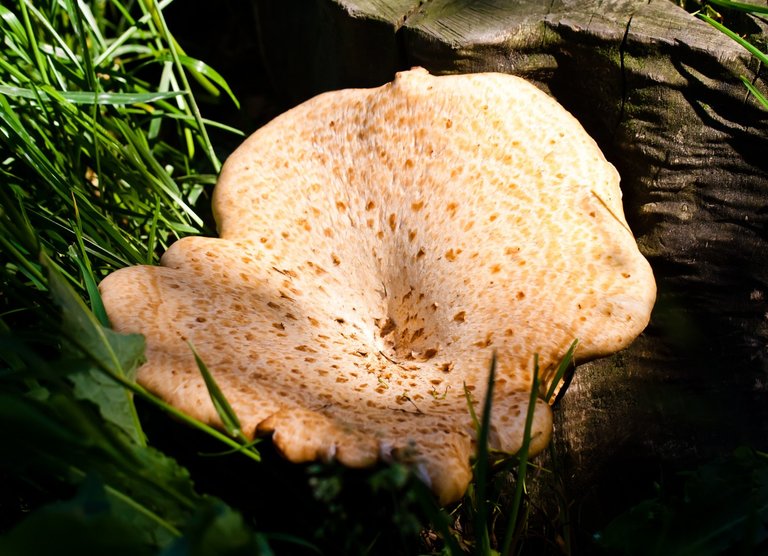
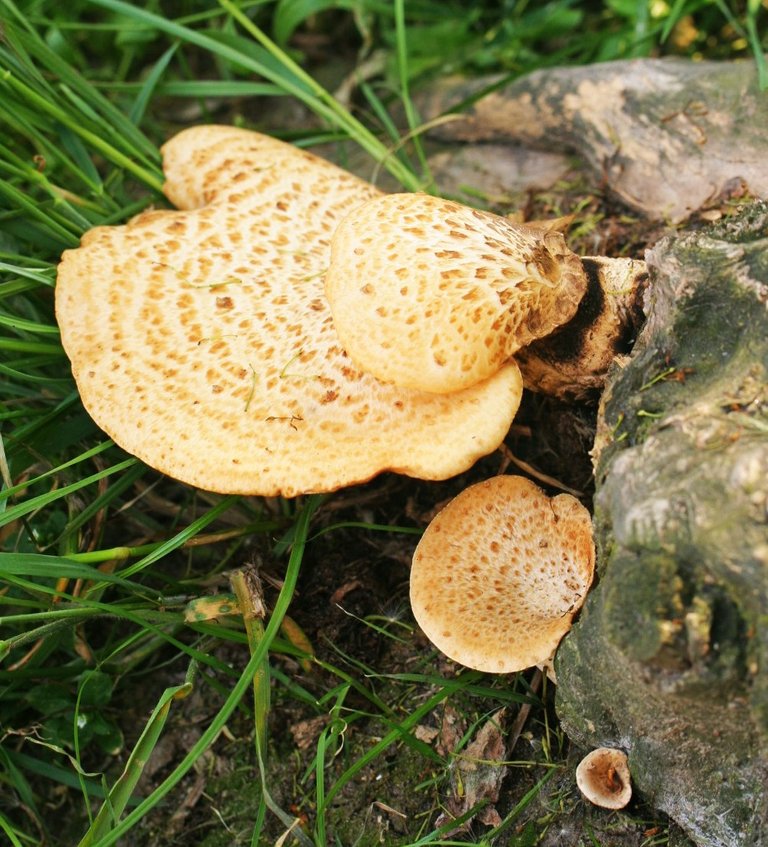
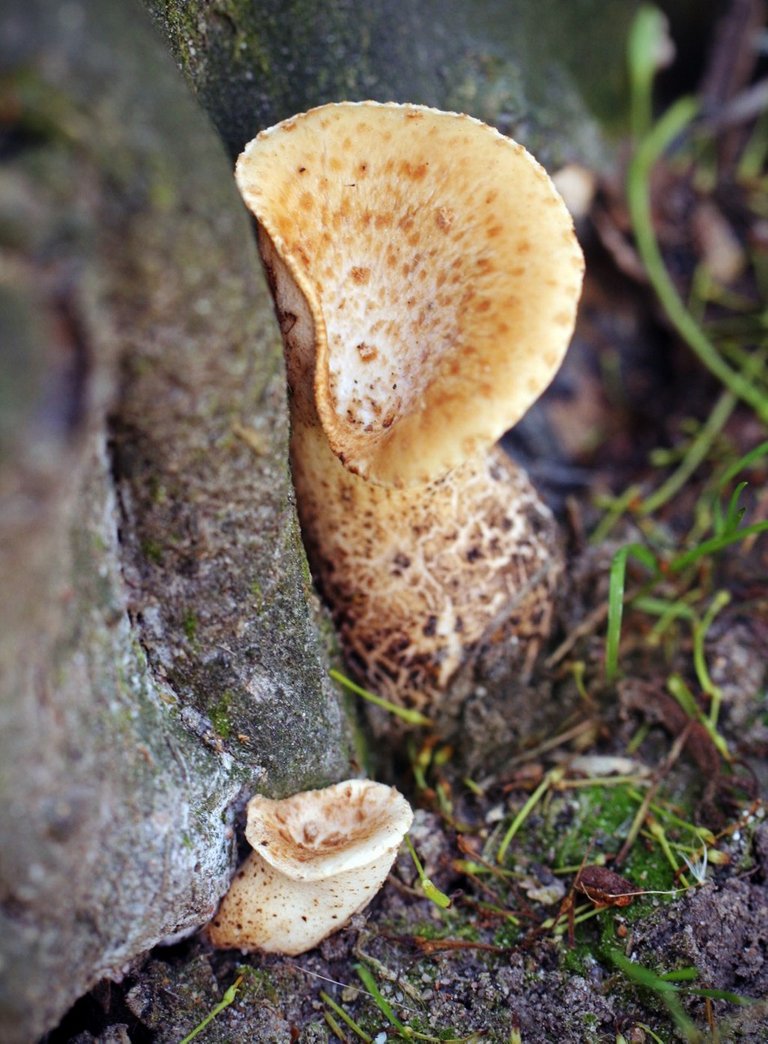

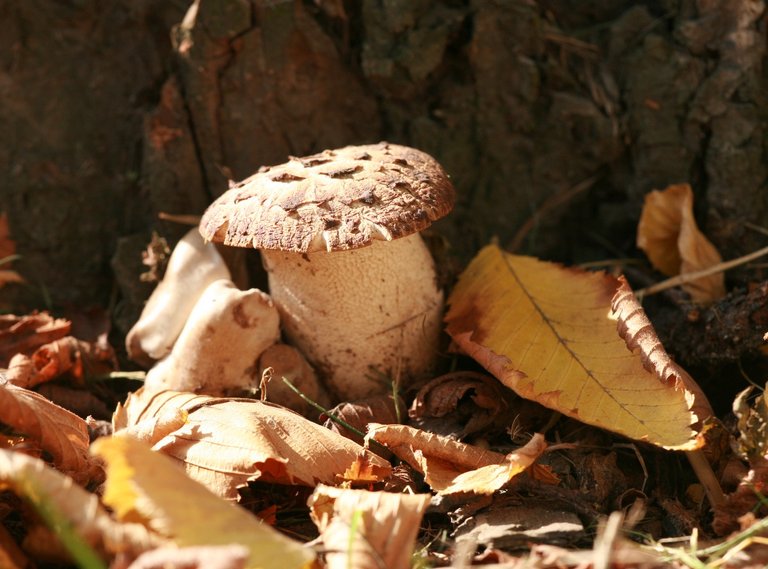
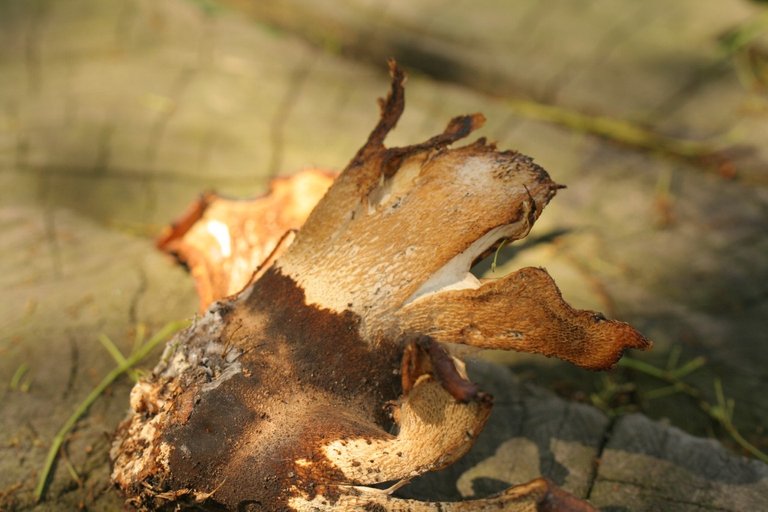
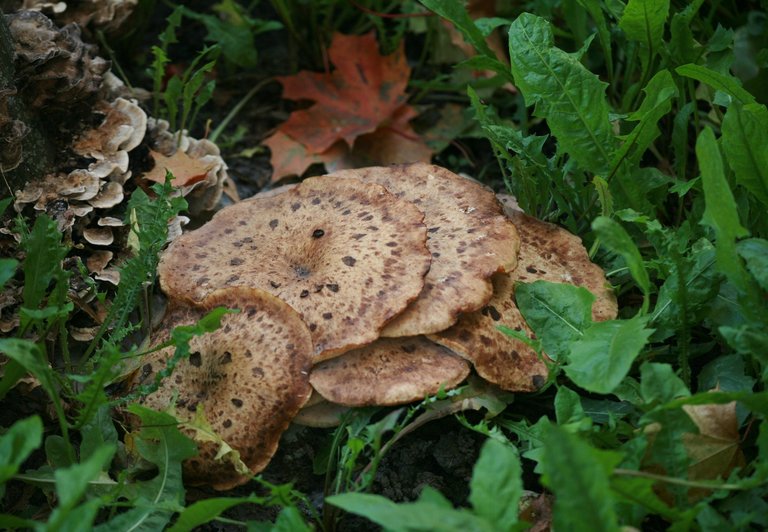
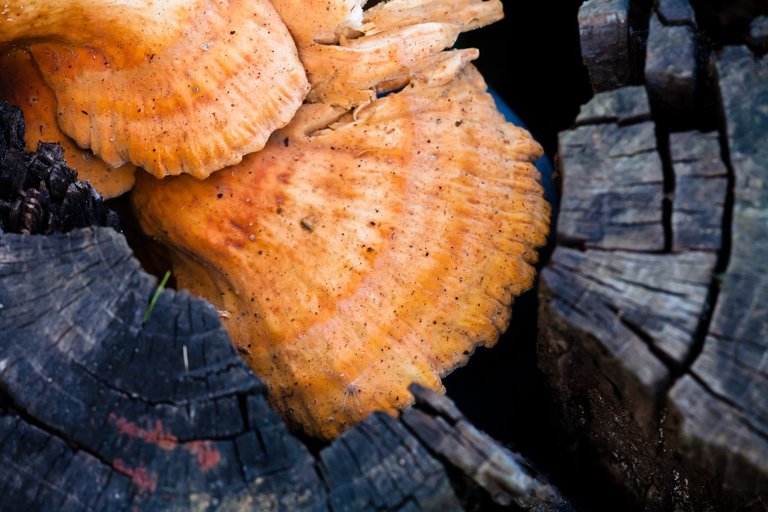

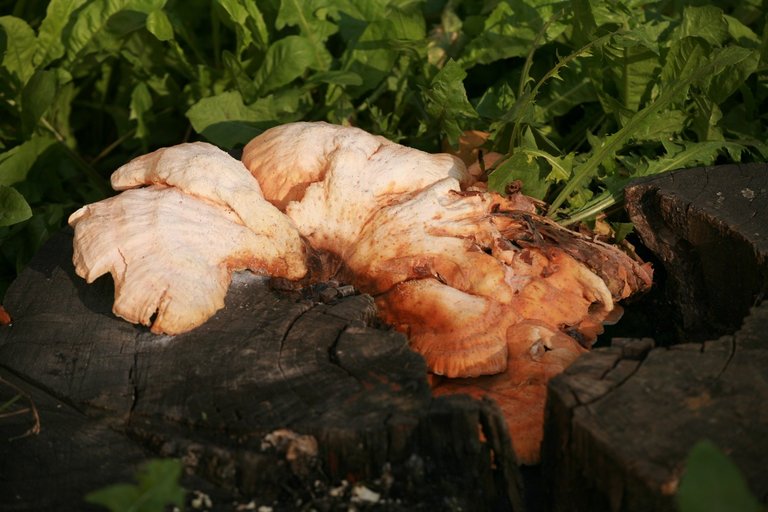
!BEER
Posted via neoxian.city | The City of Neoxian
View or trade
BEER.Hey @qwerrie, here is a little bit of
BEERfrom @cloudblade for you. Enjoy it!Learn how to earn FREE BEER each day by staking your
BEER.Amazing mushroom photography and information, fascinating life around us!
Once we start learning more about mushrooms, how much more will we be able to eat off the land around us. Sadly too many of us know little losing touch with our ancestors inner knowledge of what is edible and what is not.
@tipu curate
Upvoted 👌 (Mana: 8/16) Liquid rewards.
' to eat off the land around us' -- I love how it is being said. today I picked up a packet of puff-balls. I plan to cook them (to fry on a pan with herbs and potatoes), and if everything will run smoothly, will write a tasty post about it. I should have used the tag #ecotrain for this one, really forgot about it.
yes, I totally up for this attitude to our land. thanks for the tip very much, a pleasure to have feedback like this. and let me share a dark !BEER with you too.
View or trade
BEER.Hey @joanstewart, here is a little bit of
BEERfrom @qwerrie for you. Enjoy it!Learn how to earn FREE BEER each day by staking your
BEER.I meet a lot of tinder boxes on old birches. Perhaps this mushroom is not only a parasite, but also an orderly? All photos are very autumnal and warm)
a medical orderly? sort of symbiont? no! its not saprophite, its parasite
look what wiki says, let me quote:
Я другое наблюдаю в лиственном лесу. Гриб живёт на мёртвом и больном дереве.
У меня нет однозначного мнения. Но я-любитель грибов. Специалист может сказать наверняка.
Может быть это не случайно?
трипсы жрут наш огород, черная смородина почти вся уже сдохла. может быть, это не случайно? природе наверное надо поднять поголовье трипсов ! давайте ей поможем.
ps. паразит и симбионт: и тот и другой зверь живут вместе с носителем. но есть разница. прочитайте, что такое сапротроф. есть грибы-сапротрофы... а есть и такие, которые убивают
портятживые растения. по-моему это разница существенная.Вы рассматриваете крайние варианты, но есть переходные виды, так называемые ксилотрофы-сапротрофы. И если к ксилотрофам - паразитам относятся, например, ложный трутовик, корневая губка, трутовик Швейнитца, плоский трутовик, то к " ксилотрофам-сапротрофам можно отнести большинство видов полипоровых грибов... Наиболее известные грибы - это трутовик настоящий (Fames fomentarius (L.: Fr.) Gill.), трутовик березовый (Piptoporus betulinus (Bull.: Fr.) Karst.), дубовая губка (Daedalea quercina L.: Fr.)"
источник мнения: https://mycology.su/pro-griby/ekologicheskie-gruppy-gribov
Fifth picture down almost resembles old man of the woods. Sneaky dryad's saddle.
Wonderful September collection of mushrooms..!!
@qwerrie
Fantastic find on the Chicken of the woods...🤗...!!!
I have seen any Dryads saddles yet this year. But there's still plenty of time for fungi finds.
HAPPY FUNGI FRIDAY
🍄
happy f-friday to you, too!
:=)
feel much cheerfully now :P
thanx a lot, @ewkaw!
You're very welcome :)
🍪